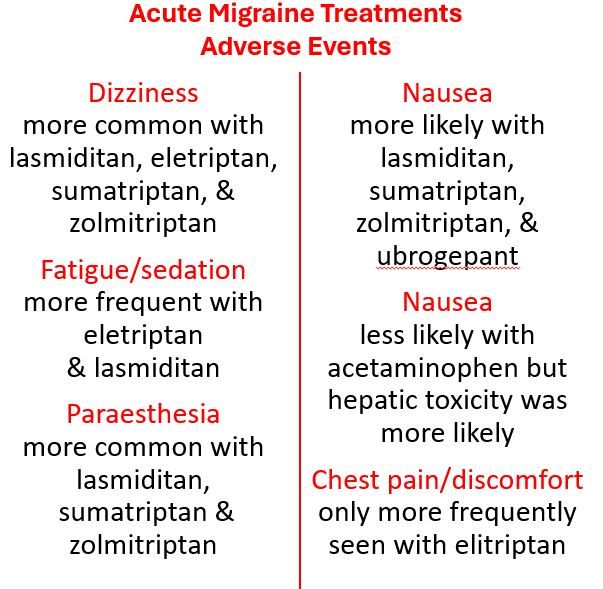New Oral Migraine Drugs Less Effective than Triptans for Acute Migraine Treatment
Triptan medications outperformed newer classes of oral migraine drugs, ie, gepants and ditans, on standard measures of efficacy for acute treatment.
Oral triptan medications for acute treatment of migraine are more effective than either ditans or gepants, the 2 newest classes of oral agents approved in the US. Four triptans in particular—eletriptan, rizatriptan, sumatriptan, and zolmitriptan—had the most favorable efficacy and safety profiles when compared with newer medications lasmiditan, rimegepant, and ubrogepant. The latter 3, according to the authors of a meta-analysis of 137 clinical trials enrolling approximately 90 000 adults, were no more effective in relieving migraine pain than acetaminophen, ibuprofen, and aspirin.
©Leigh Prather/stock.adobe.com

The meta-analysis, published in recently in the BMJ, compared all licensed oral medications used as monotherapy for the acute treatment of migraine in adults. Outcomes, recommended by the International Headache Society and standard in clinical research, were the proportion of participants who were pain-free at 2 hours after taking a medication and the proportion for who pain freedom was sustained from 2 to 24 hours post-dose.
When the 17 drugs included were compared head-to-head, elitriptan was superior to almost all the others for pain freedom at 2 hours (ORs from 1.46 to 3.01) followed by rizatriptan (ORs, 1.59 to 2.44), sumatriptan (ORs, 1.35 to 2.04) and zolmitriptan (ORs, 1.47 to 1.96), according to the study. The most effective interventions for sustained freedom from pain at 24 hours were elitriptan (ORs, 1.41 to 2.73) and ibuprofen (ORs, 3.16 to 4.82).
Investigators reported that efficacy of all the active interventions was superior compared with placebo for pain freedom at 2 hours post-dose, with ORs from 1.73 (95% CI, 1.27- 2.34) for naratriptan to 5.19 ( 95% CI, 4.25-6.33). Most also proved superior to placebo for sustained pain freedom to 24 hours, with ORs from 1.71 (95% CI, 1.07-2.74) for celecoxib to 7.58 (95% CI, 2.58-22.27) for ibuprofen. (See comparisons of tolerability below, right).
The oral drugs available for acute management of migraine reflect many different mechanisms of action, however, “no clear consensus exists as to which specific agents from these drug classes should be selected initially,” the authors wrote. Previous systematic reviews and network meta-analyses have only included subsets of all the currently licensed drugs.

The investigators, from the UK and Denmark, searched a variety of international databases as well as regulatory agency and pharmaceutical company websites from inception to June 24, 2023. Eligibility criteria required that studies be double blind randomized trials of adults aged 18 years and older given a diagnosis of migraine according to the International Classification of Headache Disorders.
The authors noted that non-steroidal anti-inflammatory drugs (NSAIDs) are the initial drugs of choice recommended by international clinical guidelines with triptans recommended for more severe episodes or after inadequate response to NSAIDs. The triptans, selective 5 hydroxytryptamine)1B/1D receptor agonists, have been progressively approved worldwide since 1991 and most are now available in generic formulations. The newer oral classes, calcitonin gene-related peptide antagonists (rimegepant, ubrogepant) and ditans (lasmitidan) are also options and particularly for individuals with contraindications to triptans, study authors wrote. The researchers cite evidence for triptans being associated with vasoconstrictive effects and with higher risk of ischemic events.
“While the recent introduction of lasmiditan (Reyvow), rimegepant (Nurtec), and ubrogepant (Ubrelvy) has expanded options for the acute treatment of migraine, the high cost of these newer drugs, along with the substantial adverse effects of lasmiditan, suggest their use as third-line options, after the less expensive, similarly efficacious, second-line options," the authors wrote.
Although costs are low for the generic triptans, which also have well-balanced efficacy and tolerability, their use in the US ranges only from 16.8% to 22.7%, according to data cited in the study. Labeling contraindicates the class in individuals with vascular disease, an important limitation, according to the authors, but CV safety concerns are not straightforward. The team calls for studies to revisit the limitation “to minimise potentially missed treatment opportunities.” Studies are also warranted to assess the cost effectiveness of the branded ditans and gepants for people with migraine who do not get adequate relief from triptans.
Cost effectiveness research and careful clinical judgement notwithstanding, “the most effective triptans should be considered as preferred acute treatment for migraine and included in the WHO List of Essential Medicines to promote global accessibility and uniform standards of care,” researchers concluded.